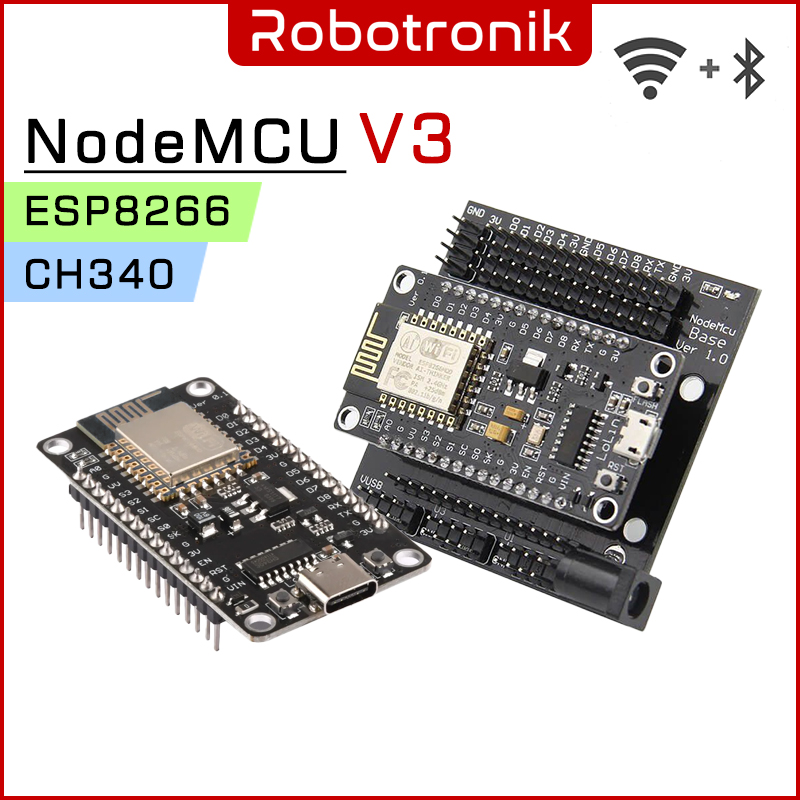
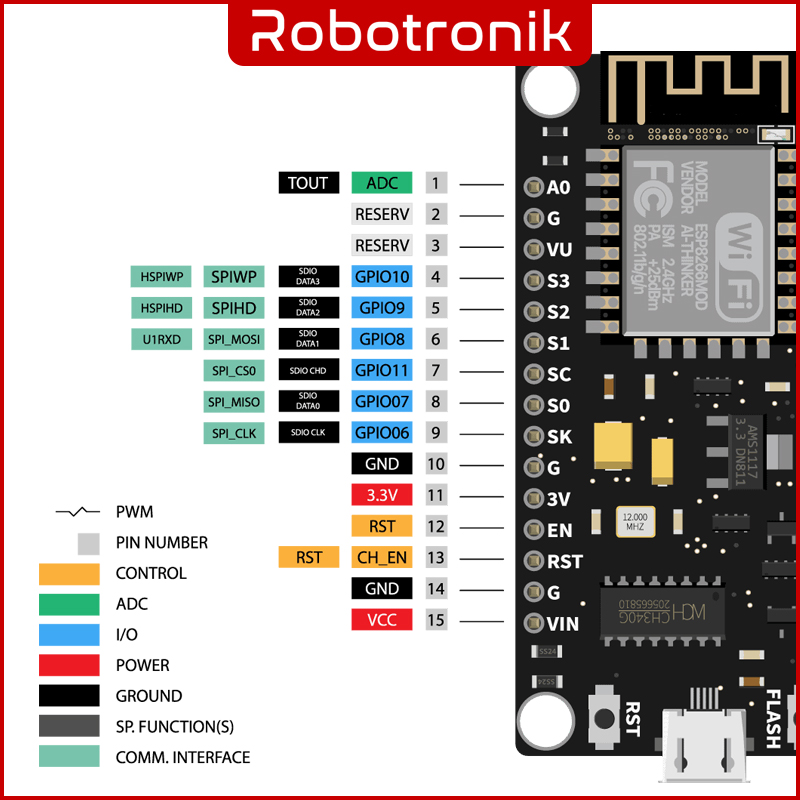
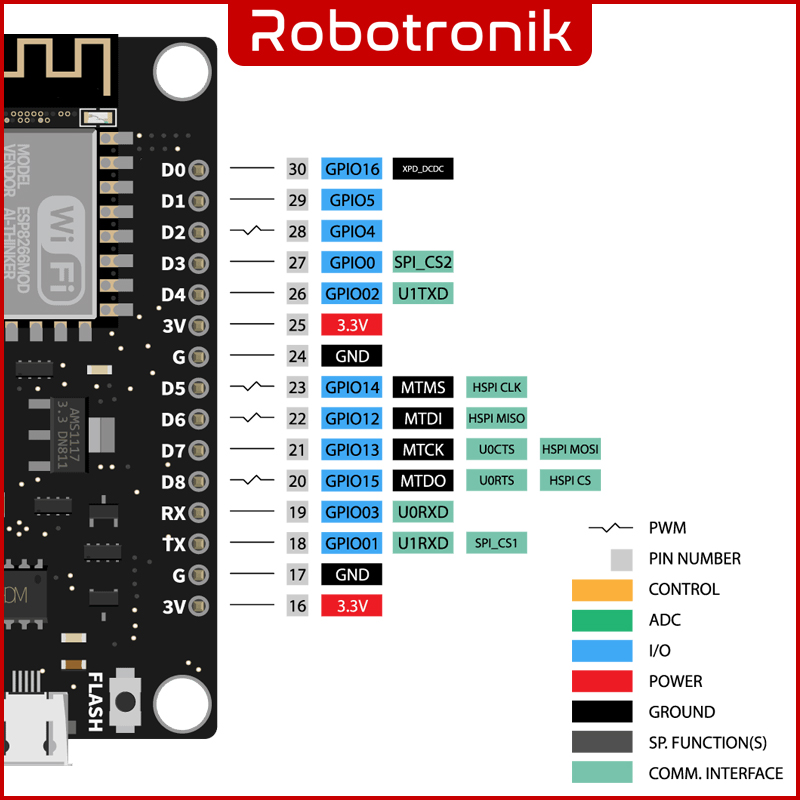
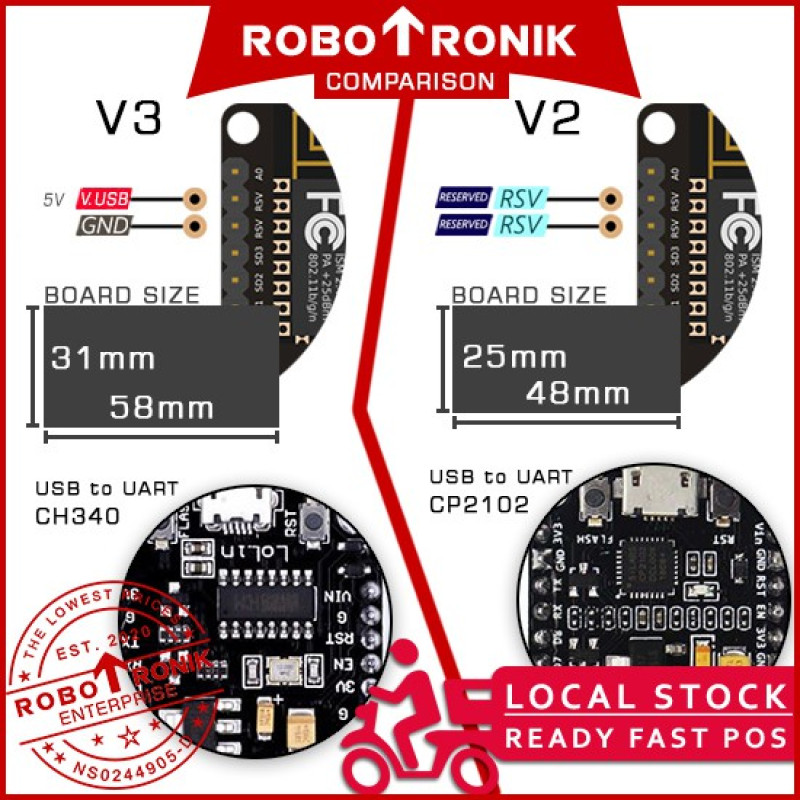
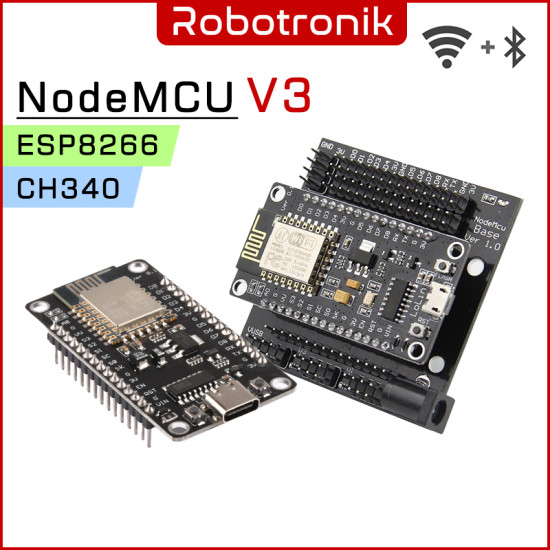



NodeMCU V3 - ESP8266 WiFi, CH340, 4MB Storage - Development Board ESP 8266 Node MCU
RM5.99 ~ 13.99
- Product Code: M-CTRL-NODEMCU-V3
- Category:
- Micro-Controller
- Wireless, BT & RF
✍ NodeMCU is an open source robot brain with a super fast clock, built in WIFI, and tons of room to fit your code. Perfect for building IoT projects and robots that communicate with their friends. You can use Arduino IDE to write and upload code, so none of your favorite habits have to change.
✍ V3 vs V2
So, what’s with the V3? NodeMCU haven’t released a new specification so far. Hence, there’s no official 3rd generation board. Turns out that V3 is a “version” invented by producer V3 is signify minor improvements to the V2 boards. Among others they claim their USB port to be more robust.
✍ If you compare the pin layout there’s only a tiny difference to the V2 layout. V3 decided to use one of the two reserve pins for USB power out and the other for an additional GND.
✍Watch out though for the difference in size! This V3 board is significantly larger than the V2 boards. Because of its size I would never use it. There are clearly better alternatives.
✍Arduino-like hardware IO
Advanced API for hardware IO, which can dramatically reduce the redundant work for configuring and manipulating hardware.
Code like arduino, but interactively in Lua script.
✍Nodejs style network API
Event-driven API for network applicaitons, which faciliates developers writing code running on a 5mm*5mm sized MCU in Nodejs style.
Greatly speed up your IOT application developing process.
- - - - - - - - - -- - - - - - - - - - - - - - - - - - - -- - - - - - - - - - - - - - - - - - - - -
The ESP8266 Node MCU Pinout peripherals include:
- 17 GPIO’s
- SPI
- I2C (implemented in software)
- I2S interfaces with DMA
- UART
- 10-bit ADC
▼Features
- Open-source platform
- Interactive & Programmable
- WiFi enabled
- Arduino-like Hardware IO
- Nodejs style network API
- ESP8266, a low cost WiFi module on-board (FCC Certified)
- On-board USB-TTL converter, plug & play
- Headers – 2.54mm 15-pin header with access to GPIOs, SPI, UART, ADC, and power pins
▼Specifications
- Input Voltage: 2.5 ~ 3.6V
- Operating Voltage: 3.3V
- CPU: 32-bit RISC Tensilica Xtensa LX106 running at 80 MHz
- 64 KB of instruction RAM, 96 KB of data RAM (80x Arduino UNO!)
- 512 KB of EEPROM (512x Arduino UNO!)
- External QSPI flash – 512 KB to 4 MB* (up to 16 MB is supported)
- IEEE 802.11 b/g/n Wi-Fi
- Integrated TR switch, balun, LNA, power amplifier and matching network
- WEP or WPA/WPA2 authentication, or open networks
- Digital I/O Pins (DIO): 16
- Analog Input Pins (ADC): 1
- UARTs: 1 on dedicated pins, plus a transmit-only UART can be enabled on GPIO2
- SPIs: 1
- I2Cs: 1
- Flash Memory: 4 MB
- SRAM: 64 KB
- Clock Speed: 80 Mhz
- 80 Mhz clock (5x arduino UNO or mega!)
